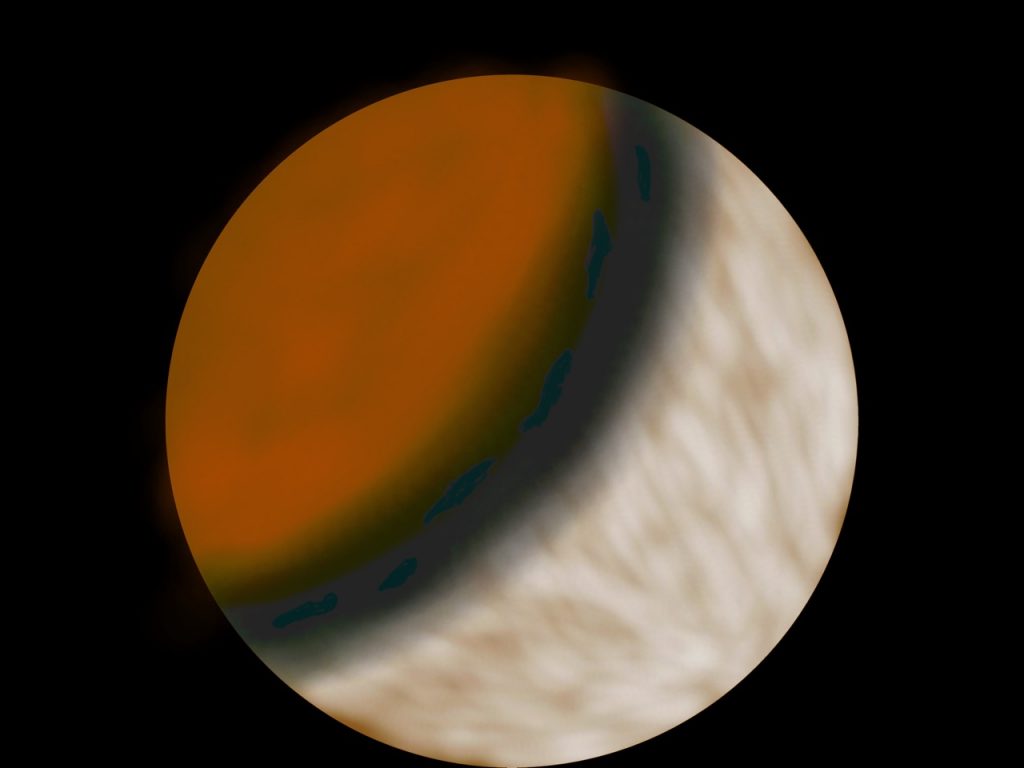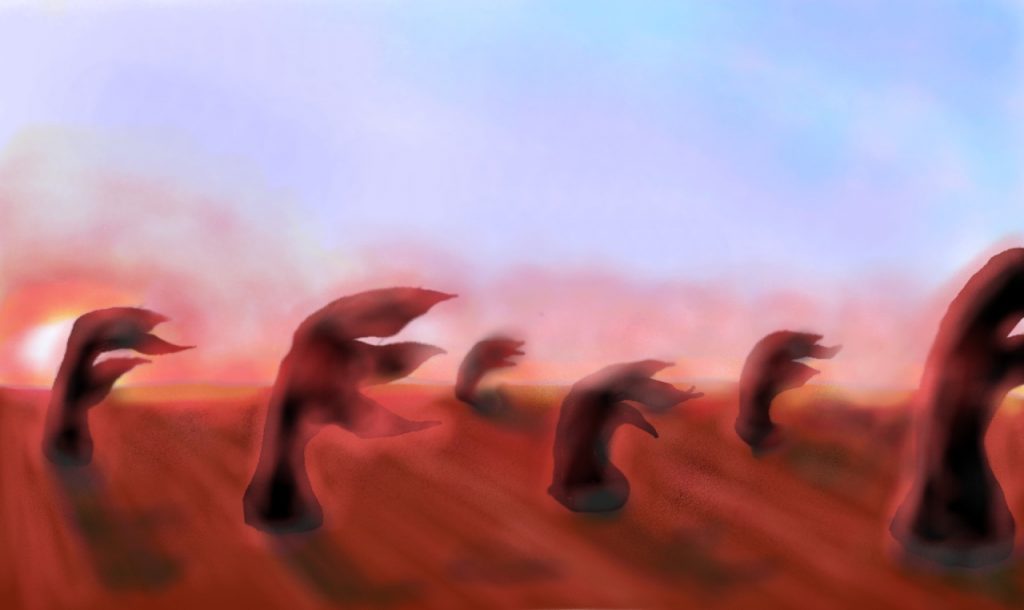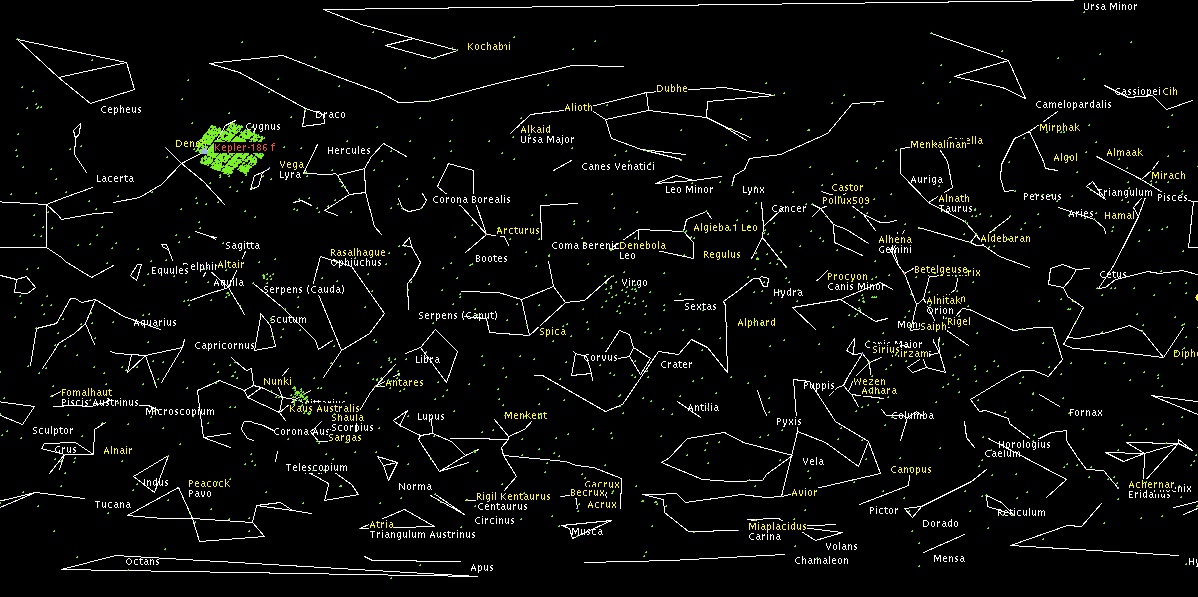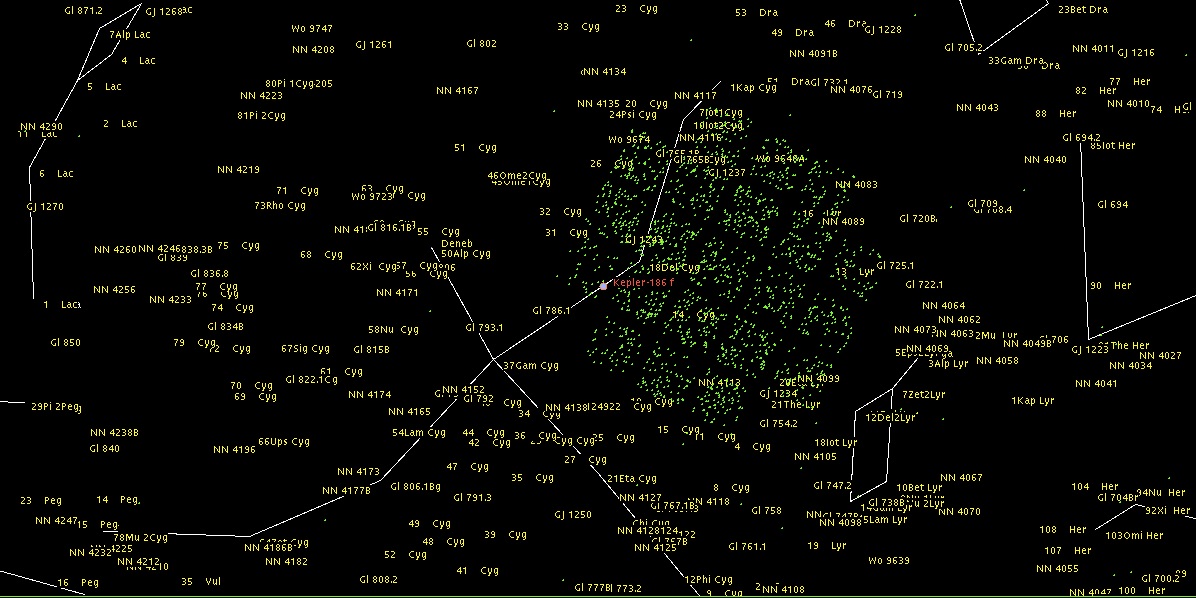Kepler-186f is an exoplanet that orbits the M-type main-sequence star, Kepler-186, which is located in the constellation Cygnus, about 492 light years from Earth. With an orbit of about 130 days, Kepler-186f is the first near-Earth-sized planet discovered in the habitable zone outside our solar system, and it is the closest exoplanet to the Earth. Kepler-186f is and is one of five planets in the outer system. The exoplanet orbits about 32.5 million miles (52.4 million kilometers) from the Sun.
(Credit: Natsuki Shirako & SGH Moriyama High School)

(Credit: Saaya Shimozaki & SGH Moriyama High School)
The host star, Kepler-186, is a red dwarf that has a red light. It has a mass of 0.478 and a surface temperature estimated at 3,788 K, about 2,000 degrees lower than our Sun’s. This means the energy of the light that reaches Kepler-186f is weak, composed fo many infrared rays. Because of this, the light that reaches the surface of the planet is unsuitable for energy absorption by green chlorophyll a, which is used by plants on Earth for photosynthesis.
If there was life on Kepler-186f, the plants might have black photosynthetic pigments that are more likely to absorb longer wavelengths of red light.

(Credit: Saaya Shimozaki & SGH Moriyama High School)
Since Kepler-186f is close to its host star at about 0.36 AU (Earth-Sun distance = 1 AU), its rotation and orbit may be synchronized by tidal forces, which is due to the gravity from the host star. If this is the case, one surface of the planet would always be facing the host star, so this surface might be very dry, while the opposite side might be covered with ice. If this is the case, only the regions in between would be habitable.
Also, because wind moves from higher temperatures to lower temperatures, on the surface of the planet, strong winds are expected to blow in a certain direction from the day side to the night side, which could mean that any plants growing on the surface are always being pushed in the same direction.
This planet is sometimes called “Earth 2.0.” It is a habitable planet that is about the same size as Earth. However, since its host star is very different from our Sun, it is probably best to think of it as a “different” Earth-type planet.
(文責:下崎紗綾・佐々木貴教)


(Kepler 186f in the ExoKyoto Stellar Window)
For more information about Kepler-186f, please visit:
http://www.exoplanetkyoto.org/exohtml/Kepler-186_f.html
Journal Articles
1.) An Earth-Sized Planet in the Habitable Zone of a Cool Star
2.) FORMATION, TIDAL EVOLUTION AND HABITABILITY OF THE KEPLER-186 SYSTEM
WEB Articles
1.) Kepler-186f, the First Earth-size Planet in the Habitable Zone
2.) 5 Things to Know About Alien Planet Kepler-186f, ‘Earth’s Cousin’
3.) Kepler 186f



